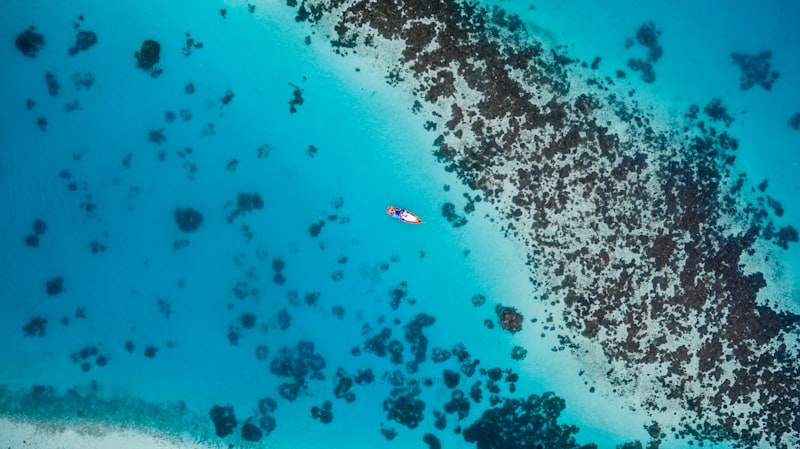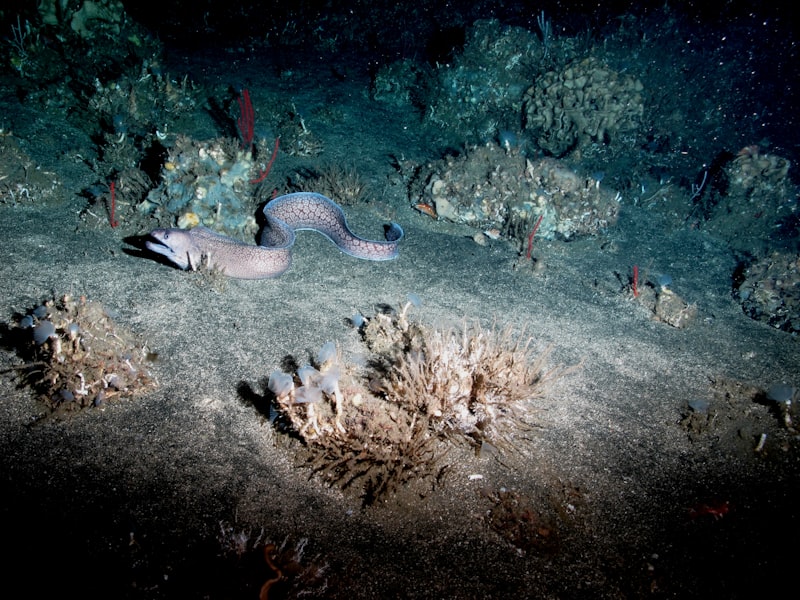Have you ever wondered why coral reefs, those vibrant underwater cities teeming with life, sometimes turn ghostly white? It’s a phenomenon known as coral bleaching, and it’s a distress signal from these delicate ecosystems. Let’s dive into the causes and consequences of coral bleaching to understand why it’s a critical issue for our oceans.
Imagine coral reefs as bustling cities filled with colorful skyscrapers and bustling inhabitants. These “cities” are home to a myriad of marine creatures, all thriving in harmony. However, when corals experience stress due to changes in their environment, they expel the vibrant algae living in their tissues, revealing their calcium carbonate skeletons underneath. This expulsion is what causes corals to bleach and turn stark white.
But what causes this stress? One major factor is rising sea temperatures. When oceans heat up, corals become stressed and expel the algae, a process exacerbated by climate change. Another culprit is pollution, such as runoff from land carrying sediments and chemicals that can smother or poison coral reefs. Additionally, ocean acidification, a result of increased carbon dioxide levels in the atmosphere, weakens coral skeletons, making them more vulnerable to bleaching.
The consequences of coral bleaching ripple throughout the marine ecosystem. Corals provide a vital habitat for countless species of fish, mollusks, and other marine life. When corals bleach, many of these species lose their homes and sources of food, disrupting the intricate balance of the reef ecosystem. Furthermore, coral reefs act as natural barriers, protecting coastlines from storms and erosion. Without healthy reefs, coastal communities are more vulnerable to the impacts of severe weather.
Addressing coral bleaching requires global cooperation and action. Efforts to reduce carbon emissions and combat climate change are crucial in mitigating the warming of our oceans. Local conservation measures, such as marine protected areas and sustainable fishing practices, also play a significant role in preserving coral reefs.
Coral bleaching is a visible reminder of the impact of human activities on our planet. By understanding its causes and consequences, we can work towards safeguarding these vital ecosystems for future generations. Together, we have the power to protect and preserve the colorful underwater cities that enrich our oceans.
Unveiling the Underwater Crisis: Coral Bleaching Explained
Picture a coral reef as a bustling city bustling with life, colors that dazzle the eyes, and a community where everyone has a role. Now, imagine walking through this city to find many buildings ghostly white, devoid of their vibrant hues. This eerie sight is what happens during coral bleaching.
At its core, coral bleaching is like a canary in a coal mine for our oceans. It’s a warning sign that something isn’t right below the waves. Corals, these intricate creatures, have a delicate balance with the environment. When conditions change rapidly — think warmer waters or pollution — they become stressed. And stressed corals expel the tiny, colorful algae that live within their tissues. These algae give coral their vivid colors and provide them with food through photosynthesis.
When the algae leave, the coral turns white, hence the term “bleaching”. This isn’t just a cosmetic issue; it’s a survival crisis. Without their algae buddies, corals are more susceptible to disease and starvation. They lose their energy source and become weaker, making them vulnerable to even more threats.
So, what causes this bleaching phenomenon? Imagine your favorite swimming pool turning uncomfortably warm because the heater got stuck. That’s how corals feel when the ocean temperatures rise just a few degrees above normal for too long. It’s like they’re sweating out their life partners.
But that’s not all. Human activities like pollution and overfishing can also stress corals out, pushing them closer to the edge. Imagine trying to thrive in a home filled with garbage and noise; that’s the reality for many coral reefs.
Now, here’s the silver lining — some corals can recover if conditions improve quickly. If the ocean cools down or pollution levels drop, the algae may return, and the coral can regain its colors. It’s like a second chance at life for these precious underwater cities.
Understanding coral bleaching is crucial because healthy coral reefs aren’t just pretty places for divers to explore. They’re vital ecosystems that support a quarter of all marine life, including many fish we rely on for food. So, next time you see a picture of a coral reef, think about the delicate balance that keeps it thriving — and how we can help protect it.
Ocean in Distress: Understanding the Triggers of Coral Bleaching
Coral bleaching, a phenomenon often triggered by rising sea temperatures, is a stark indication of ecological distress. Imagine corals, those intricate structures that resemble underwater gardens, losing their vivid colors and turning ghostly white. It’s akin to a once-lively neighborhood fading into desolation.
But what exactly causes this distressing event? The primary culprit is temperature change. Corals have a symbiotic relationship with tiny algae called zooxanthellae, which live within their tissues and provide them with food and vibrant coloration. When ocean waters become too warm, corals expel these algae, leading to the bleaching effect. It’s like evicting essential workers from an ecosystem, leaving corals weak and vulnerable.
Human activities exacerbate this delicate situation. Pollution, overfishing, and coastal development add stress to coral reefs, already struggling with temperature fluctuations. It’s as if we’re slowly dismantling the foundation of a magnificent city, brick by brick.
Why should we care about coral bleaching? Coral reefs are not just pretty underwater scenes; they are vital to marine biodiversity and coastal protection. Picture them as natural barriers that shield coastlines from storms and provide habitats for countless marine species. Without healthy reefs, the ripple effects on marine life and coastal communities can be devastating.
The Ripple Effect of Coral Bleaching: Threats to Marine Biodiversity
So, what exactly is coral bleaching? It’s when corals, stressed by changes in conditions like temperature or pollution, expel the colorful algae living in their tissues. These algae are not just for show; they provide food and give corals their dazzling hues. Without them, the corals turn ghostly white, hence the term “bleaching.” While corals can recover from mild bleaching if conditions improve, severe or prolonged bleaching can be lethal.
The ripple effect of coral bleaching extends far beyond the corals themselves. Imagine you rely on a bustling market for your daily needs, and suddenly half the stalls are empty. The ripple effect starts small – fish that depend on corals for food and shelter must now search farther afield, disrupting their life cycles. This disruption then affects larger predators, like sharks and rays, which rely on these fish for their survival.
But it doesn’t stop there. Coral reefs are barriers that protect coastlines from storms and erosion. Without healthy reefs, coastal communities become more vulnerable to natural disasters. Economically, coral reefs support tourism and fishing industries worth billions of dollars globally. The loss of reefs due to bleaching threatens not only marine life but also livelihoods and economies.
In essence, coral bleaching isn’t just an environmental issue; it’s a human one too. It’s a stark reminder of the interconnectedness of all life on Earth. When corals bleach, they send us a message – a message that the health of our oceans is in peril. It’s up to us to heed that message and take action to protect these invaluable ecosystems before it’s too late.
Climate’s Wrath Beneath the Waves: Impact of Global Warming on Coral
Imagine a bustling underwater city, vibrant with life and color. This is the world of coral reefs, where a delicate balance of marine life thrives. However, beneath the surface, unseen forces are at play. Global warming, driven by human activities, poses a grave threat to these underwater ecosystems.
Coral reefs, often referred to as the rainforests of the sea, are biodiversity hotspots that support a quarter of all marine species. They provide shelter, food, and breeding grounds for countless fish and other marine creatures. However, rising sea temperatures due to global warming are pushing corals beyond their limits.
The primary culprit behind coral bleaching is increased water temperature. Corals have a symbiotic relationship with tiny algae called zooxanthellae, which live inside their tissues and provide them with food and vibrant colors. When ocean waters become too warm, corals expel these algae, causing them to turn completely white—a phenomenon known as coral bleaching. While bleached corals aren’t dead, they are under severe stress and are more susceptible to disease and death.
Beyond temperature rise, ocean acidification—a consequence of increased carbon dioxide levels in the atmosphere—further threatens coral health. As the oceans absorb more CO2, they become more acidic, hindering the ability of corals to build their calcium carbonate skeletons. This weakened structure makes them more vulnerable to erosion and storm damage.
The impact of coral loss extends far beyond the reefs themselves. Coastal communities that rely on reefs for tourism, fisheries, and storm protection face economic hardships. Additionally, the loss of coral reefs diminishes natural coastal defenses against storms and erosion, leaving communities more exposed to the ravages of climate change.
Efforts to mitigate these effects include reducing carbon emissions, establishing marine protected areas, and promoting coral reef restoration initiatives. By addressing the root causes of climate change and actively restoring damaged reefs, there is hope that these invaluable ecosystems can recover and thrive once more.
SOS from the Seas: How Coral Bleaching Endangers Marine Ecosystems

Imagine walking through an underwater city where vibrant colors dance around you, fish of all shapes and sizes dart in and out of intricate structures, and life pulses in every corner. This is the magical world of coral reefs, bustling with activity and beauty beneath the ocean’s surface. However, this paradise is under serious threat, and the culprit is coral bleaching.
Coral bleaching is not just a cosmetic issue for these underwater marvels; it’s a dire warning sign of ecosystem distress. Corals, tiny animals that build intricate calcium carbonate skeletons, live symbiotically with colorful algae called zooxanthellae. These algae provide corals with essential nutrients and contribute to their vivid hues. However, when corals are stressed due to factors like rising sea temperatures, pollution, or changes in water chemistry, they expel these algae. As a result, the corals turn bone-white, losing their color and primary food source.
The consequences ripple throughout the entire marine ecosystem. Coral reefs support a quarter of all marine life, making them crucial hubs of biodiversity. Fish, turtles, sharks, and countless other species rely on these reefs for food, shelter, and breeding grounds. Without healthy coral reefs, these populations dwindle, disrupting the delicate balance of the ocean’s food web.
Beyond biodiversity, coral reefs protect coastlines from erosion and storm damage. They act as natural barriers, reducing the impact of waves and storms on coastal communities. Economically, coral reefs generate billions of dollars annually through tourism, fisheries, and pharmaceutical discoveries. Their decline jeopardizes livelihoods and economies that depend on healthy marine environments.
Addressing coral bleaching requires global cooperation and urgent action. Governments, scientists, conservationists, and communities worldwide are working to mitigate the stressors affecting coral reefs. Efforts range from reducing carbon emissions and improving water quality to establishing marine protected areas and promoting sustainable fishing practices.
The fate of coral reefs is intertwined with our own. By understanding the causes and consequences of coral bleaching, we can take meaningful steps to protect these invaluable ecosystems for future generations. It’s a race against time, but with collective efforts, we can ensure that SOS signals from the seas are met with effective solutions that preserve the beauty and biodiversity of coral reefs worldwide.
In Hot Water: Why Rising Temperatures Spell Trouble for Coral Reefs
Coral reefs thrive in specific temperature ranges, but even slight increases can trigger coral bleaching—a phenomenon where corals expel the symbiotic algae living in their tissues, causing them to turn white. This bleaching isn’t just an aesthetic issue; it’s a sign of distress and can lead to coral death if prolonged.
But why are rising temperatures so detrimental to coral reefs? The relationship between corals and algae is delicate. When stressed by warmer waters, corals eject the algae, which provide them with essential nutrients and color. Without these algae, corals become vulnerable to disease and starvation, eventually leading to widespread coral death and the collapse of reef ecosystems.
Beyond coral bleaching, rising temperatures also exacerbate ocean acidification—a process where the ocean absorbs excess carbon dioxide from the atmosphere. This acidification reduces the availability of carbonate ions that corals need to build their skeletons, making it harder for them to grow and maintain their reef structures.
The impacts of coral reef decline are far-reaching. Economically, coral reefs support industries like tourism and fisheries, providing livelihoods for millions of people worldwide. Ecologically, they protect coastlines from erosion and storms, and their biodiversity supports countless species.

In the face of these challenges, efforts to mitigate climate change and reduce carbon emissions are crucial. Protecting coral reefs requires global action to limit temperature increases and reduce other stressors like pollution and overfishing. Only by addressing these threats can we hope to preserve these invaluable marine ecosystems for future generations.
Beyond Beautiful: Unmasking the Hidden Dangers of Coral Bleaching
The primary culprit behind coral bleaching is rising sea temperatures, exacerbated by climate change. When temperatures spike, corals become stressed, prompting them to expel the algae that provide them with food and vibrant hues. Without these algae, corals lose their main source of nutrition and are more susceptible to disease. Over time, bleached corals weaken and may die if the stress persists.
The ramifications of coral bleaching extend far beyond aesthetics. Coral reefs provide crucial habitats for a quarter of all marine life, supporting biodiversity and sustaining coastal communities. Loss of coral reefs not only threatens marine species but also impacts millions of people who depend on reefs for food, income from tourism, and coastal protection from storms.
Efforts to mitigate coral bleaching include reducing carbon emissions to curb global warming, establishing marine protected areas, and promoting sustainable fishing practices. These measures aim to alleviate stress on coral reefs and foster their recovery.
While coral reefs dazzle with their beauty, they face a hidden peril in the form of coral bleaching. Understanding and addressing the causes of bleaching are vital steps toward preserving these invaluable marine ecosystems for future generations.
Frequently Asked Questions
What are the consequences of coral bleaching?
Consequences of coral bleaching include loss of habitat for marine life, decline in biodiversity, economic impacts on fisheries and tourism, and disruption of coastal protection from storms.
What can individuals do to help mitigate coral bleaching?
Learn how individuals can contribute to mitigating coral bleaching by reducing carbon emissions, practicing responsible tourism near coral reefs, avoiding chemical pollutants, supporting marine protected areas, and participating in coral restoration efforts.
What causes coral bleaching?
Coral bleaching occurs when coral reefs expel symbiotic algae, called zooxanthellae, due to stress factors such as increased water temperatures, pollution, or changes in water chemistry. Without these algae, corals lose their color and primary food source, making them vulnerable to disease and starvation.
Can coral bleaching be prevented?
Learn how coral bleaching can be prevented with effective conservation measures such as reducing carbon emissions, establishing marine protected areas, and promoting sustainable fishing practices.
How does climate change impact coral bleaching?
Learn how climate change exacerbates coral bleaching by raising ocean temperatures. Discover the direct link between warming seas and stressed coral reefs, leading to loss of vibrant marine ecosystems.


